Hello! The cold weather has become even colder since the beginning of February. In Nishinomiya City, where the Sake Museum is located, the annual event called Kurabiraki will be held every Saturday through March 1. Each sake brewing company has prepared unique events, so please come and enjoy sake. In this article, in commemoration of the registration of “Traditional knowledge and skills of sake-making with kōji mold in Japan” as a UNESCO intangible cultural heritage at the end of last year, we would like to introduce the process of traditional sake brewing that was practiced from the Meiji period (1868-1912) to the early Showa period (1926-1989).
As we have introduced in previous articles, the raw materials of sake are rice, water and kōji mold. From here, we will introduce the process by which these materials are transformed into sake. At first, rice is milled and brought to the brewery. Sake brewing begins with the rice washing process, which washes away the bran and other impurities attached to the milled rice.
Although sake brewing machines have been introduced in various processes since the modern era, the rice washing process before that time involved filling a vat with rice and water and having craftsmen stomp their feet about 150 times to wash the rice. In this process, they had to put their feet into cold water in a cold brewery, so it was very strict to them.
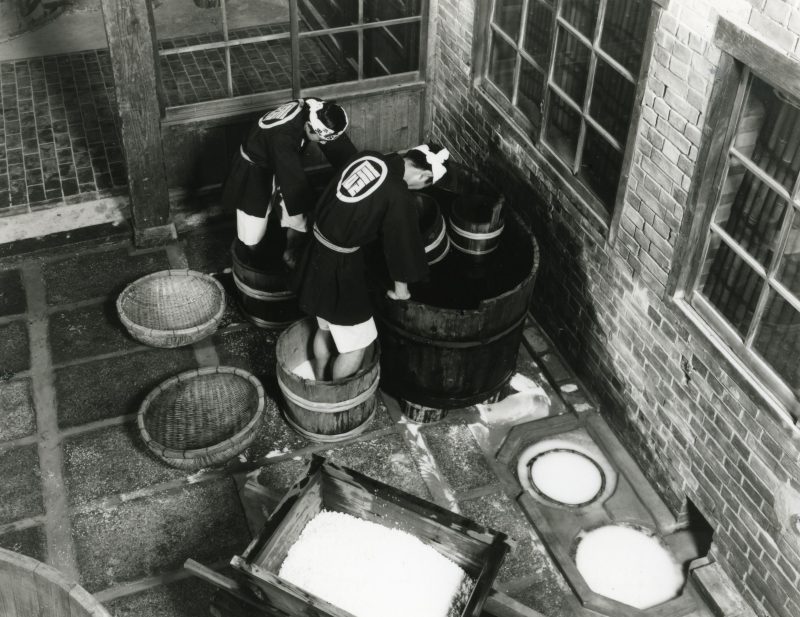
After washing rice, it is allowed to absorb water before moving on to the steaming process. There is an equipment called Kamaba (rice steaming place) in a brewery. A large pot is placed there to boil water, and a large vat specially designed for steaming rice, called Koshiki (steaming vat), is placed on top of it to steam the rice. The steaming condition is determined by making “Hineri-mochi (rice cake)” by Toji. Since the condition depends on the quality of the rice and the amount of water absorbed by the rice, it is important to determine the appropriate degree of steaming for sake brewing. After steaming, the rice is dug out by using a tool named “Bunji” like a shovel and spread out to cool down.
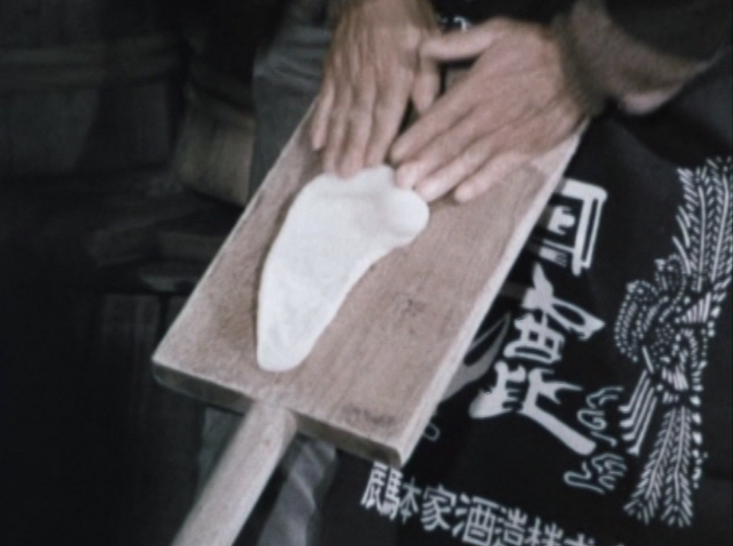
A part of steamed rice is used for koji making. The rice is moved to Koji-muro (the room for making koji) and “Tane koji (Koji seed =fully cultivated spores of yellow koji fungi, also called “Moyashi”)” are sprinkled onto it. And then, the fungus propagates into the rice. It takes about 2 days until koji rice is made. The room is heated to activate the fungi, so craftsmen took off their clothes as shown in the photo unlike other work done in the cold. In this way, a uniquely Japanese type of malt is produced. In the examination about registration for a UNESCO intangible cultural heritage, is said that the technique using such koji mold was appreciated.
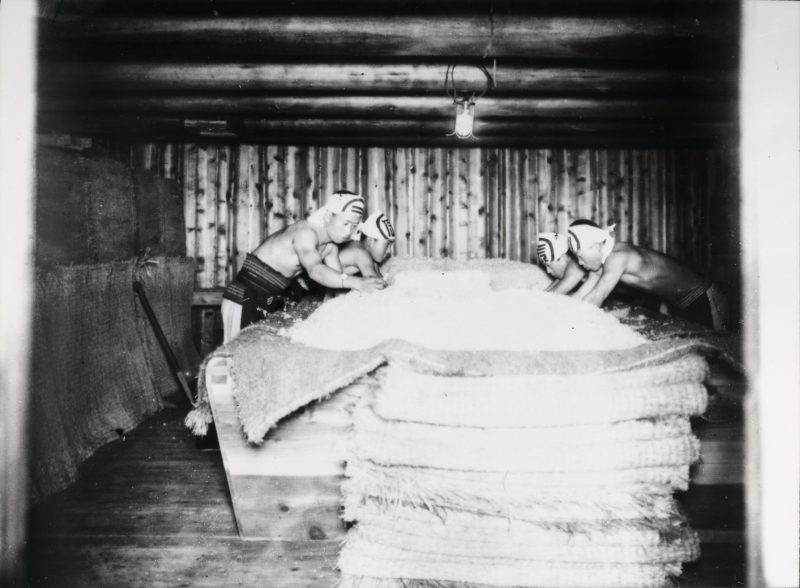
So far, we have introduced the process up to koji making as the first part of sake brewing. In the next article, we would like to introduce the process of making yeast culture and fermentation. Please look forward to it!

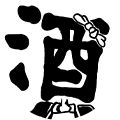
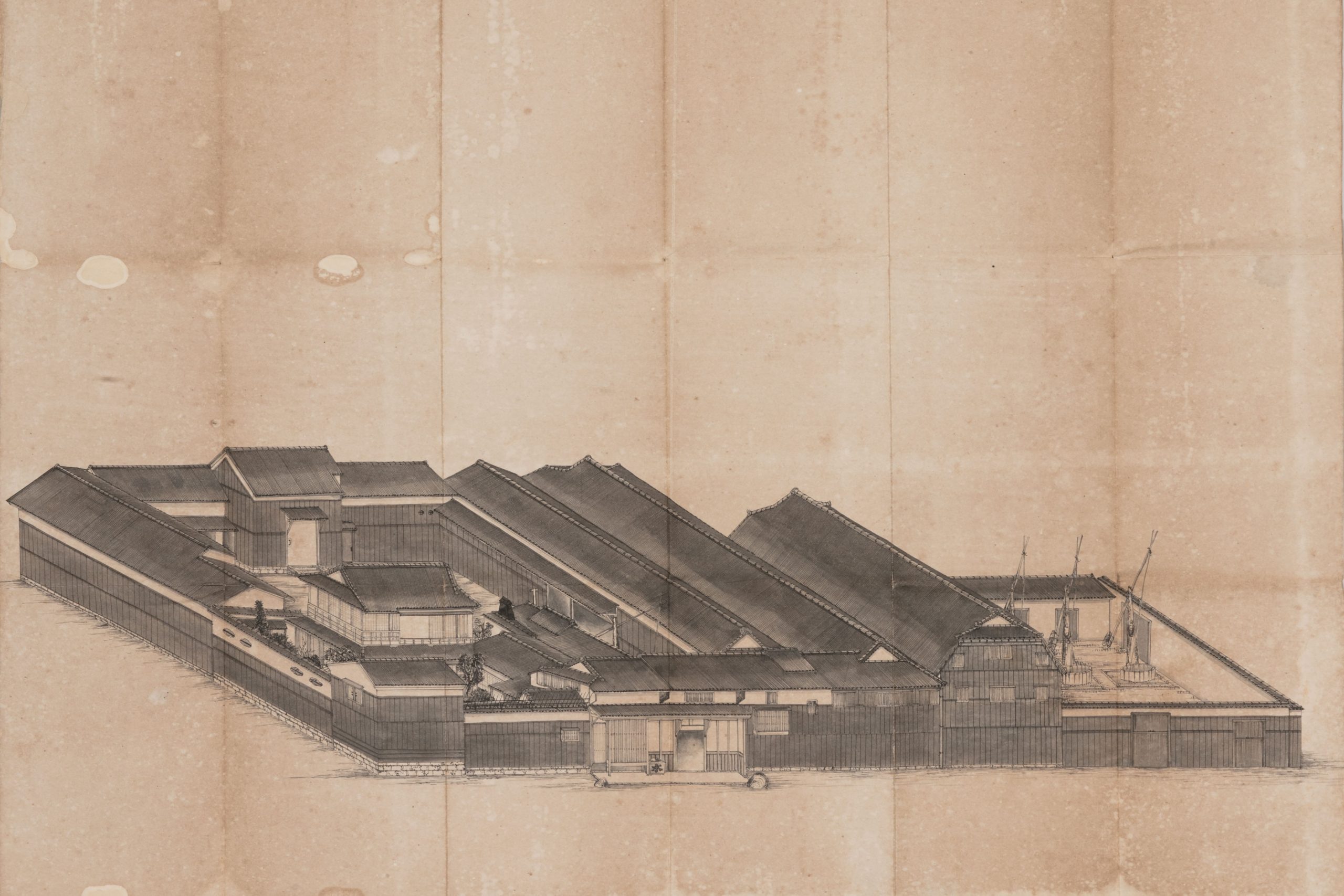
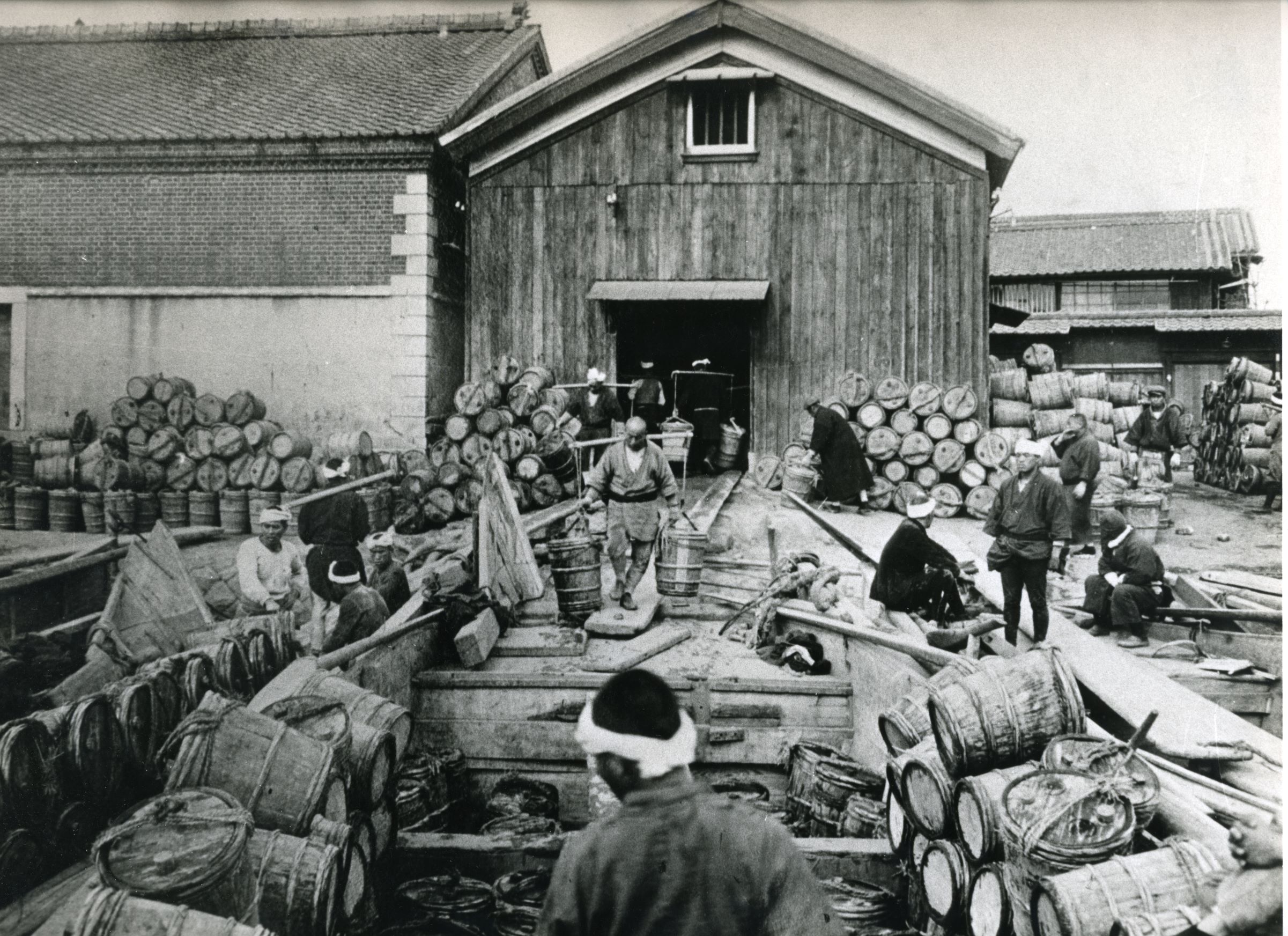

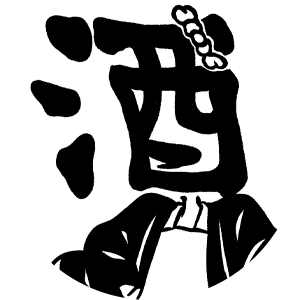
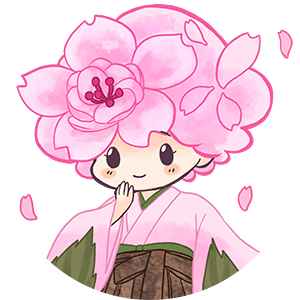
I’ve never seen such exquisitely depicted architectural drawings of sake brewery buildings!